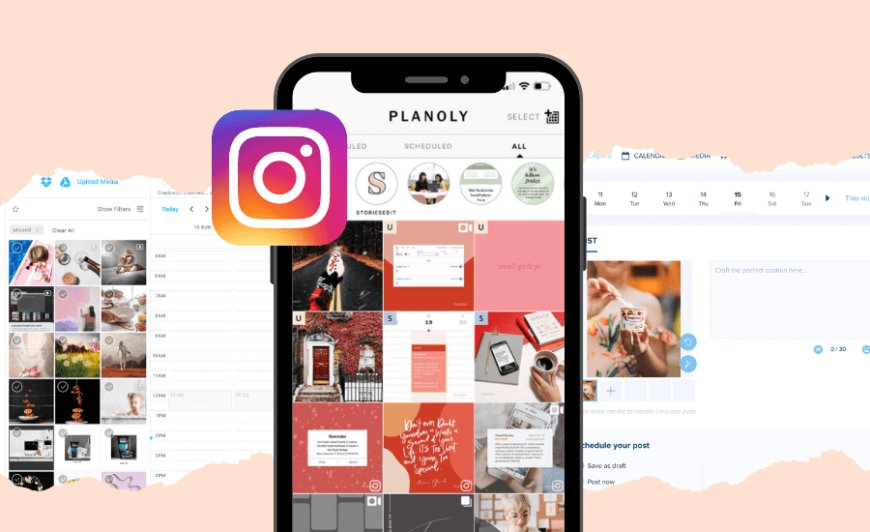The Complete Guide to Developing an Android App Like Instagram

Developing an Android app like Instagram involves a comprehensive process that includes planning, design, development, and deployment. Instagram, a leading social media platform, is renowned for its user-friendly interface, engaging features, and seamless performance. Creating a similar app requires a detailed approach and collaboration with top Android app development companies to ensure success. This guide will walk you through the essential steps and considerations for developing an Android app like Instagram, utilizing custom Android app development services.
1. Conceptualize Your App
Define Your Goals: Start by defining the goals of your app. What unique features or value will your app provide compared to Instagram? Consider aspects such as niche focus, target audience, and key functionalities.
Feature List: Create a comprehensive list of features you want in your app. For an Instagram-like app, consider including:
- User Profiles: Personal accounts with customizable profiles.
- Photo and Video Sharing: Ability to upload and share media.
- Social Feed: A dynamic feed displaying user posts.
- Likes and Comments: Interaction features for posts.
- Direct Messaging: Private messaging between users.
- Filters and Editing Tools: In-app photo and video editing features.
- Search and Discover: Options to search for users and content.
2. Research and Plan
Market Research: Analyze existing social media apps, including Instagram, to identify trends, user preferences, and potential gaps in the market. This will help you refine your app’s unique selling proposition (USP).
Target Audience: Define your target audience and their needs. Understanding your users’ preferences and behavior will guide your app’s design and functionality.
Competitive Analysis: Evaluate competitors to understand their strengths and weaknesses. This analysis will help you identify opportunities for differentiation.
3. Choose a Development Approach
Custom Development: Opt for custom Android app development services to create a tailored solution that aligns with your specific requirements. Custom development allows for greater flexibility and scalability.
Cross-Platform Development: Consider cross-platform development if you plan to target both Android and iOS users. Frameworks like Flutter or React Native enable the development of apps for multiple platforms using a single codebase.
4. Design the User Interface (UI) and User Experience (UX)
Wireframes and Prototypes: Create wireframes and prototypes to visualize the app’s layout and flow. This helps in refining the design and gathering feedback before development begins.
UI/UX Design: Focus on designing an intuitive and visually appealing interface. Key design elements include:
- Navigation: Easy-to-use navigation for a seamless user experience.
- Visual Appeal: Attractive and modern design elements that resonate with users.
- Responsive Design: Ensure the app functions well on various screen sizes and resolutions.
5. Develop the App
Front-End Development: This involves coding the user interface and implementing the visual elements of your app. Technologies used in front-end development include Java, Kotlin, and XML for Android apps.
Back-End Development: Develop the server-side logic, databases, and APIs necessary for the app’s functionality. This includes user authentication, data storage, and integration with third-party services.
Integration of Features: Implement core features such as photo and video uploading, editing tools, social feed, and messaging functionality.
Testing and QA: Conduct thorough testing to identify and resolve bugs, performance issues, and usability concerns. Key testing aspects include functional testing, performance testing, and compatibility testing across various devices and Android versions.
6. Launch and Deployment
App Store Submission: Prepare your app for submission to the Google Play Store. This involves creating a developer account, preparing app metadata, and complying with store guidelines.
Marketing and Promotion: Develop a marketing strategy to promote your app. Utilize social media, digital marketing, and other channels to reach your target audience and drive downloads.
User Feedback: Collect and analyze user feedback post-launch to identify areas for improvement and make necessary updates.
7. Post-Launch Maintenance and Support
Bug Fixes and Updates: Regularly update your app to fix bugs, enhance performance, and introduce new features. Ongoing maintenance is crucial for keeping your app relevant and functional.
User Support: Provide support to address user issues and inquiries. Effective user support enhances the overall user experience and fosters positive engagement.
8. Engage with Top Android App Development Companies
Choose the Right Partner: Collaborate with top Android app development companies to leverage their expertise and experience. Consider companies with a strong track record in developing social media apps and custom solutions.
Custom Development Services: Opt for companies that offer custom Android app development services tailored to your specific needs. This ensures that your app is built to your exact specifications and requirements.
Conclusion
Developing an Android app like Instagram involves a multi-faceted approach, from initial planning and design to development, launch, and maintenance. By partnering with top Android app development companies and utilizing custom Android app development services, you can create a compelling and successful app that resonates with users. Focus on delivering a unique value proposition, an engaging user experience, and robust functionality to stand out in the competitive social media landscape.
What's Your Reaction?




















